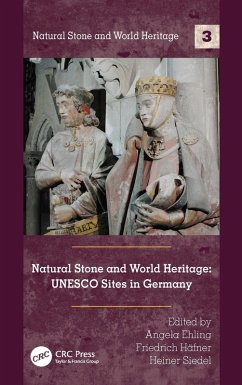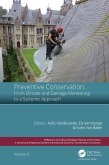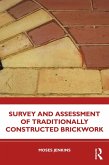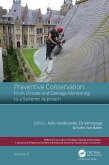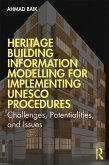Natural Stone and World Heritage (eBook, ePUB)
UNESCO Sites in Germany
Redaktion: Ehling, Angela; Siedel, Heiner; Häfner, Friedrich
71,95 €
71,95 €
inkl. MwSt.
Sofort per Download lieferbar

36 °P sammeln
71,95 €
Als Download kaufen

71,95 €
inkl. MwSt.
Sofort per Download lieferbar

36 °P sammeln
Jetzt verschenken
Alle Infos zum eBook verschenken
71,95 €
inkl. MwSt.
Sofort per Download lieferbar
Alle Infos zum eBook verschenken

36 °P sammeln
Natural Stone and World Heritage (eBook, ePUB)
UNESCO Sites in Germany
Redaktion: Ehling, Angela; Siedel, Heiner; Häfner, Friedrich
- Format: ePub
- Merkliste
- Auf die Merkliste
- Bewerten Bewerten
- Teilen
- Produkt teilen
- Produkterinnerung
- Produkterinnerung

Bitte loggen Sie sich zunächst in Ihr Kundenkonto ein oder registrieren Sie sich bei
bücher.de, um das eBook-Abo tolino select nutzen zu können.
Hier können Sie sich einloggen
Hier können Sie sich einloggen
Sie sind bereits eingeloggt. Klicken Sie auf 2. tolino select Abo, um fortzufahren.

Bitte loggen Sie sich zunächst in Ihr Kundenkonto ein oder registrieren Sie sich bei bücher.de, um das eBook-Abo tolino select nutzen zu können.
This work presents the most important stones used in several UNESCO sites in Germany, their occurrences, aspects of quarrying in historical times and of course their petrographical, mineralogical and technical features. It is shown how these features influence the weathering of the stones and how restoration of stones is carried out.
- Geräte: eReader
- ohne Kopierschutz
- eBook Hilfe
- Größe: 10.11MB
Andere Kunden interessierten sich auch für
![Natural Stone and World Heritage (eBook, PDF) Natural Stone and World Heritage (eBook, PDF)]() Natural Stone and World Heritage (eBook, PDF)71,95 €
Natural Stone and World Heritage (eBook, PDF)71,95 €![Preventive Conservation - From Climate and Damage Monitoring to a Systemic and Integrated Approach (eBook, ePUB) Preventive Conservation - From Climate and Damage Monitoring to a Systemic and Integrated Approach (eBook, ePUB)]() Preventive Conservation - From Climate and Damage Monitoring to a Systemic and Integrated Approach (eBook, ePUB)48,95 €
Preventive Conservation - From Climate and Damage Monitoring to a Systemic and Integrated Approach (eBook, ePUB)48,95 €![Survey and Assessment of Traditionally Constructed Brickwork (eBook, ePUB) Survey and Assessment of Traditionally Constructed Brickwork (eBook, ePUB)]() Moses JenkinsSurvey and Assessment of Traditionally Constructed Brickwork (eBook, ePUB)57,95 €
Moses JenkinsSurvey and Assessment of Traditionally Constructed Brickwork (eBook, ePUB)57,95 €![Reconstruction and Restoration of Architectural Heritage 2021 (eBook, ePUB) Reconstruction and Restoration of Architectural Heritage 2021 (eBook, ePUB)]() Reconstruction and Restoration of Architectural Heritage 2021 (eBook, ePUB)182,95 €
Reconstruction and Restoration of Architectural Heritage 2021 (eBook, ePUB)182,95 €![Preventive Conservation - From Climate and Damage Monitoring to a Systemic and Integrated Approach (eBook, PDF) Preventive Conservation - From Climate and Damage Monitoring to a Systemic and Integrated Approach (eBook, PDF)]() Preventive Conservation - From Climate and Damage Monitoring to a Systemic and Integrated Approach (eBook, PDF)48,95 €
Preventive Conservation - From Climate and Damage Monitoring to a Systemic and Integrated Approach (eBook, PDF)48,95 €![Building Better Arts Facilities (eBook, ePUB) Building Better Arts Facilities (eBook, ePUB)]() Joanna WoronkowiczBuilding Better Arts Facilities (eBook, ePUB)56,95 €
Joanna WoronkowiczBuilding Better Arts Facilities (eBook, ePUB)56,95 €![Heritage Building Information Modelling for Implementing UNESCO Procedures (eBook, ePUB) Heritage Building Information Modelling for Implementing UNESCO Procedures (eBook, ePUB)]() Ahmad Hamed BaikHeritage Building Information Modelling for Implementing UNESCO Procedures (eBook, ePUB)48,95 €
Ahmad Hamed BaikHeritage Building Information Modelling for Implementing UNESCO Procedures (eBook, ePUB)48,95 €-
-
-
This work presents the most important stones used in several UNESCO sites in Germany, their occurrences, aspects of quarrying in historical times and of course their petrographical, mineralogical and technical features. It is shown how these features influence the weathering of the stones and how restoration of stones is carried out.
Dieser Download kann aus rechtlichen Gründen nur mit Rechnungsadresse in A, B, BG, CY, CZ, D, DK, EW, E, FIN, F, GR, HR, H, IRL, I, LT, L, LR, M, NL, PL, P, R, S, SLO, SK ausgeliefert werden.
Produktdetails
- Produktdetails
- Verlag: Taylor & Francis eBooks
- Seitenzahl: 166
- Erscheinungstermin: 12. September 2021
- Englisch
- ISBN-13: 9781000436051
- Artikelnr.: 62264576
- Verlag: Taylor & Francis eBooks
- Seitenzahl: 166
- Erscheinungstermin: 12. September 2021
- Englisch
- ISBN-13: 9781000436051
- Artikelnr.: 62264576
- Herstellerkennzeichnung Die Herstellerinformationen sind derzeit nicht verfügbar.
Angela Ehling studied Geology at the University of Greifswald, Germany, and at the State Mining Institute (Gornyj Institut) Saint Petersburg, Russia. She was employed at the Geological Survey (Berlin) of the German Democratic Republic from 1985 to 1990, and since then she has worked at the Federal Institute for Geosciences and Natural Resources, Hannover-Berlin, Germany, on applied mineralogy and Building/ornamental stones. She obtained her PhD from University Hannover, Germany in 1999. Ehling is responsible for one of the biggest geoscientific and dimension stone collections in Germany. She is involved in several dimension stone projects, even in the context of monument protection. She is consultant of the German government dimension stones used in governmental buildings, she is speaker of the German GHSR-working-group, co-founder and board member of the German network "stones in the city" and guest lecturer at the FH Potsdam, on stone restoration. Friedrich Häfner studied Geology at the Johannes-Gutenberg-University, Mainz (SW-Germany). In 1974 he received a diploma in Geology. At the end of 1977 he obtained a doctorate in Science at the University of Mainz. Between 1977 and 2014 he was a member of staff of the Geological Survey of Rhineland-Palatinate (federal state of Germany), lastly as head of the department of geology, including engineering geology and commodities. From 1980 to 2000 he gave lectures in engineering geology at the University of Mainz. For 10 years Häfner was speaker of the national German working group of the IAEG-Commission No. 10 "Building stones and ornamental rocks". Between 1997 and 2005 he was speaker of the working group on commodities of the community of Geological Surveys of Germany. He has published more than 80 papers dealing with topics in engineering geology, commodities, building stones and public relations of the geological sciences. Now Häfner acts as a consultant, mainly in the natural stone industry. Heiner Siedel studied Mineralogy and Geochemistry at the Mining Academy in Freiberg and obtained his PhD from Halle University in 1989 with a petrographic dissertation on low-grade metamorphic slates in the Harz Mts., Germany. Afterwards he worked with the Institute for Concrete Research in Dresden, investigating damage mechanisms in concrete. In 1991 he started his work at the Saxon State Office for Preservation of Monuments in Dresden in a research project about stone deterioration and conservation on monuments. 1996-2000 he worked as scientist and chief executive officer of the Institute of Diagnosis and Conservation on Monuments in Saxony and Saxony-Anhalt, dealing with conservation projects in Germany as well as in Cambodia and Thailand. Since 1999 he teaches restorers in material science at the University of Fine Arts in his hometown Dresden. In 2000 he got a position as senior scientist at the TU Dresden, Institute of Geotechnical Engineering, Chair of Applied Geology, where he teaches Geology, Petrography and Technical Petrography and became an appointed professor in 2012. He is active in the German GHSR working group and member of the Permanent Scientific Committee of the quadrennial International Congress on Deterioration and Conservation of Stone.
